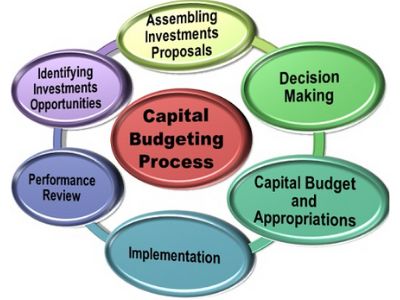
Table of Contents
Capital Budgeting
What is a Capital Budgeting?
Capital budgeting is a process to assess the investments and expenses in order to obtain the best Return on Investment. It involves the decision to invest the current funds for an addition, disposition, customization or replacement of fixed assets. The large expenditures include - the purchase of fixed assets such as Land, building, rebuilding or replacing existing equipment. These types of large investments are known as Capital Expenditures.

Capital budgeting is a technique to increase a company’s future profits. It usually involves the computation of each project's future accounting profit by period, cash flow by period, the present value of cash flow by considering the time value of money.
Features of Capital Budgeting
- Involves high-risk
- Large profit estimated
- Long time period between the initial investment and estimated returns
Talk to our investment specialist
Capital Budgeting Process
Project Identification
The initial step towards the capital budgeting is to create a proposal for investments. There could be various reasons for taking up for investments such as the addition of a new product line or expanding the existing one. Other than this, it could be a proposal to augment the production or reduce the cost of outputs.
Project Screening and Assessment
It involves the selecting of all correct criteria to judge the desirability of a proposal. Project screening has to match with the objective of the firm to maximize its Market value. Time value of money becomes useful in this step.
Under this way, the total cash inflow and outflow of the uncertainties and risks linked with the proposal have to be examined thoroughly and accurately provisioning has to be done for the same.
Project Selection
In project selection, there is no such defined method to select the proposal for the investment because businesses have different requirements. This is the reason the approval of an investment proposal is done based on the selection criteria and that is defined for every firm to keep in mind about the objectives of the investment.
If the proposal gets finalized then the different alternatives are raised, this is called preparing the capital budget. The average cost of the funds will be reduced and a detailed procedure or the periodical reports and tracking project for the lifetime need to be streamlined in the beginning.
Implementation
Money is spent and the proposal is applied there are different responsibilities like applying proposals, completion of a project within the requisite period and reduction of cost is alloted. The management takes over the task for monitoring and containing the execution of proposals.
Performance Review
The last stage of capital budgeting includes the comparison of actual results with the standard ones. The inauspicious results are identified and removed from the projects to assist for future selection of the proposals.
All efforts have been made to ensure the information provided here is accurate. However, no guarantees are made regarding correctness of data. Please verify with scheme information document before making any investment.












